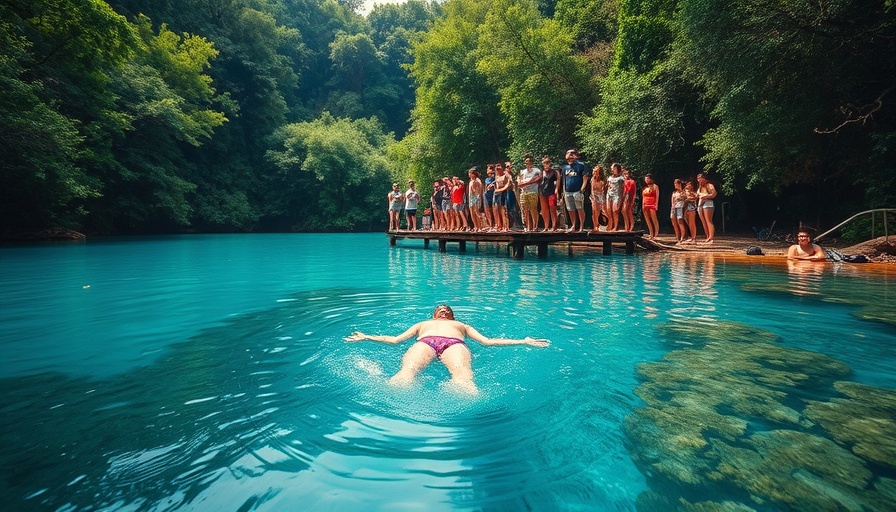
Florida's Springs: Natural Wonders Facing Unprecedented Threats
Florida's freshwater springs, often referred to as liquid treasures, are facing dire threats from pollution, rapid development, and climate change. The Floridan Aquifer, which spans 100,000 square miles and supplies approximately 90% of the state’s drinking water, feeds these springs, making them essential for both the environment and local communities. With over 1,000 springs in the state, they provide recreational opportunities and unique ecosystems, yet a substantial number have become polluted, especially in areas with high agricultural activity.
The Role of Agriculture in Polluting Springs
In rural Florida, runoff from fertilizers and pesticides is causing significant harm to the springs. These chemicals contribute to nutrient-rich waters that promote harmful algae blooms, suffocating the aquatic life and degrading the quality of drinking water. According to experts, these blooms lead to a decline in biodiversity, posing a direct risk to the state’s natural resources.
Urban Development: A Double-Edged Sword
The rapid urbanization of Florida poses another significant challenge. With an average of 1,000 people moving to the state daily, the demand for housing, roads, and commercial spaces is skyrocketing. Increased paved surfaces prevent rainwater from replenishing the aquifer, while urban runoff introduces a myriad of pollutants. This development can draw visitors seeking outdoor activities like tubing and swimming in these springs, which worsens the impact on these delicate ecosystems.
Climate Change: A Rising Concern
Furthermore, climate change exacerbates the issues facing Florida's springs. Altered weather patterns lead to extreme droughts and flooding, adversely impacting the springs’ flow and health. As conditions shift, the natural balance within these ecosystems is threatened, necessitating immediate attention and actions to safeguard the springs.
Community Action and Awareness
Local governments, including those in areas like Zephyrhills, have begun to take action to mitigate the damage by restricting construction and implementing more stringent water usage policies. For instance, certain developments have been paused as residents and officials alike recognize the value of preserving these natural resources. Such proactive measures are crucial in protecting Florida's springs for future generations.
What You Can Do
There are steps that residents can take to contribute to the preservation of Florida's remarkable springs. Engaging in community efforts aimed at pollution reduction, attending local government meetings, and advocating for sustainable development and agricultural practices can make a significant difference. Additionally, educating oneself and others about the importance of these ecosystems lays the groundwork for informed citizen action.
Conclusion: Safeguarding Our Natural Resources
As Floridians, understanding the threats to our freshwater springs is paramount. Not only do they sustain wildlife and human activities, but they also represent the natural beauty and ecological diversity of the state. By working together to address these challenges, we can help ensure these springs continue to thrive for generations to come.
 Add Row
Add Row  Add
Add 




Write A Comment